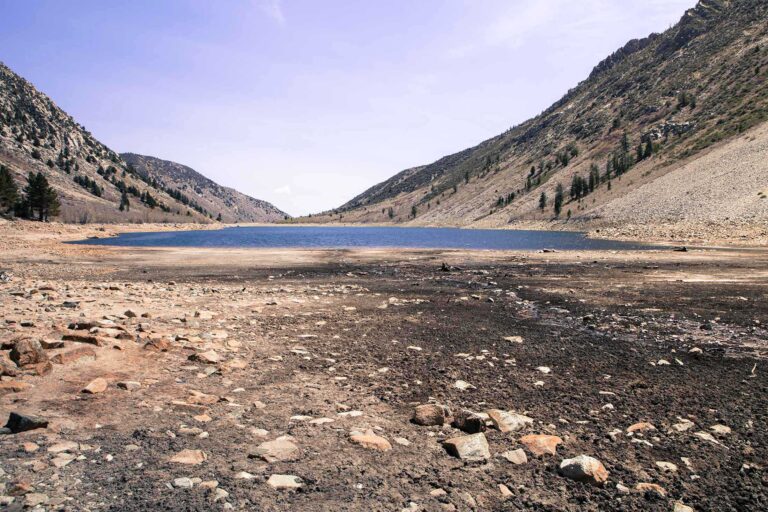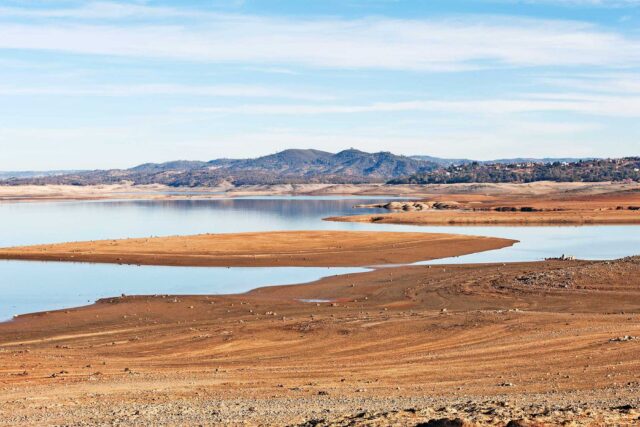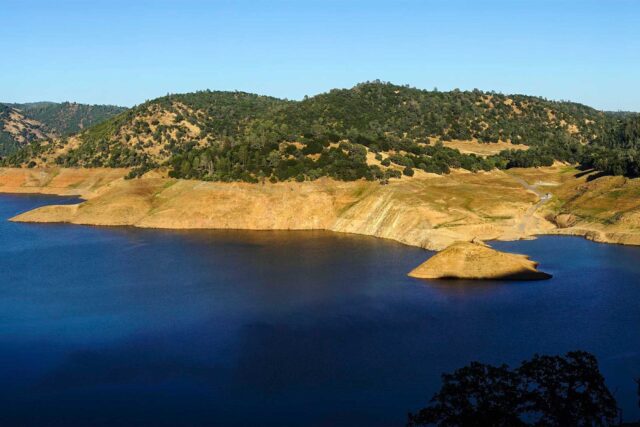California is now in its second year of drought, hard on the heels of the last one in 2012-16. But drought is not an equal-opportunity crisis; it can be more or less disruptive depending on geography, storage, how water supplies are managed—and, of course, precipitation. And some sectors—notably rural water water systems and the environment—are more vulnerable.
“Are we ready to avoid the worst outcomes that we saw in 2012-16? Knowing what’s changed since then and what’s different this time could help us,” said Alvar Escriva-Bou at a virtual event last week.
Escriva-Bou noted that high temperatures and low precipitation have set the stage for difficult times in some key regions. Regional variability in storage conditions is also significant. In the Sacramento Valley, for example, “we’re in similar conditions as in third year of the last drought,” he said. “That’s really important because water conditions in the Sacramento Valley have statewide implications” for water exported to large parts of the state, and to support the Bay-Delta ecosystem.
The most significant change since the last drought was the passage of the state’s Sustainable Groundwater Management Act (SGMA), which will affect how much groundwater can be pumped to make up for surface water cuts.
Since implementing SGMA will take many years, this drought could cause thousands of shallow drinking water wells to go dry from extra pumping in the San Joaquin Valley and other farming regions, Escriva-Bou noted.
A panel of experts moderated by center director Ellen Hanak discussed ways to manage this drought.
Josué Medellín-Azuara of the University of California, Merced said that the agricultural sector has big challenges to becoming more drought resilient. “We are in the early stages of SGMA. To achieve sustainability, some demand management actions need to be taken,” he said. “This is a great opportunity to revisit groundwater sustainability plans’ drought provisions.” Recharge and water trading show a lot of promise to build resilience, he noted.
Grant Davis, general manager of Sonoma Water, talked about record-low reservoir storage in the 110-mile-long Russian River watershed that led Governor Newsom to declare a drought emergency there. Compared to last time, this drought “has come on faster and is more pronounced,” Davis said. The agency is looking at 20% reductions in water use across three counties, he said.
“We’re hoping we’ll get a serious look at the type of resiliency projects that will be required to get us through,” including groundwater recharge and managing reservoirs to capture more water from large storms, something that has already helped the watershed store more water.
The State Water Board is the key agency for approving recharge projects, which won’t address this year’s shortages but could help prepare for another dry year. Laurel Firestone, a member of the board, talked about the board’s effort to “create a more streamlined and clear process to enable recharge.”
Firestone said the board is also trying to prevent further drought emergencies beyond those already covered by the governor’s order, ”particularly for small, rural communities and already vulnerable aquatic ecosystems, which will be hit the hardest this year. Whether it’s trucking water to houses or trucking fish to water, those are emergencies we want to do everything we can to avoid.”
Despite all the challenges, participants were hopeful. “We’re better prepared than the last drought,” said Firestone. “We’re focused on earlier and better communication, we have better data and tools, we can respond a lot faster and have resources in place to prevent new emergencies.”
Escriva-Bou is also optimistic, with a caveat. “Significant investments and new mandates are quite likely to increase our preparedness this time. To avoid the worst outcomes, we need to act as early as possible, and plan for a potential third year of drought, which would be really painful.”
We invite you to watch the event video.




